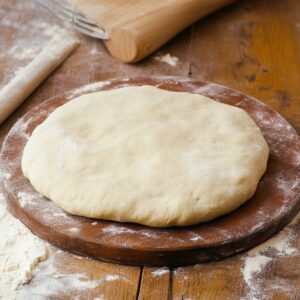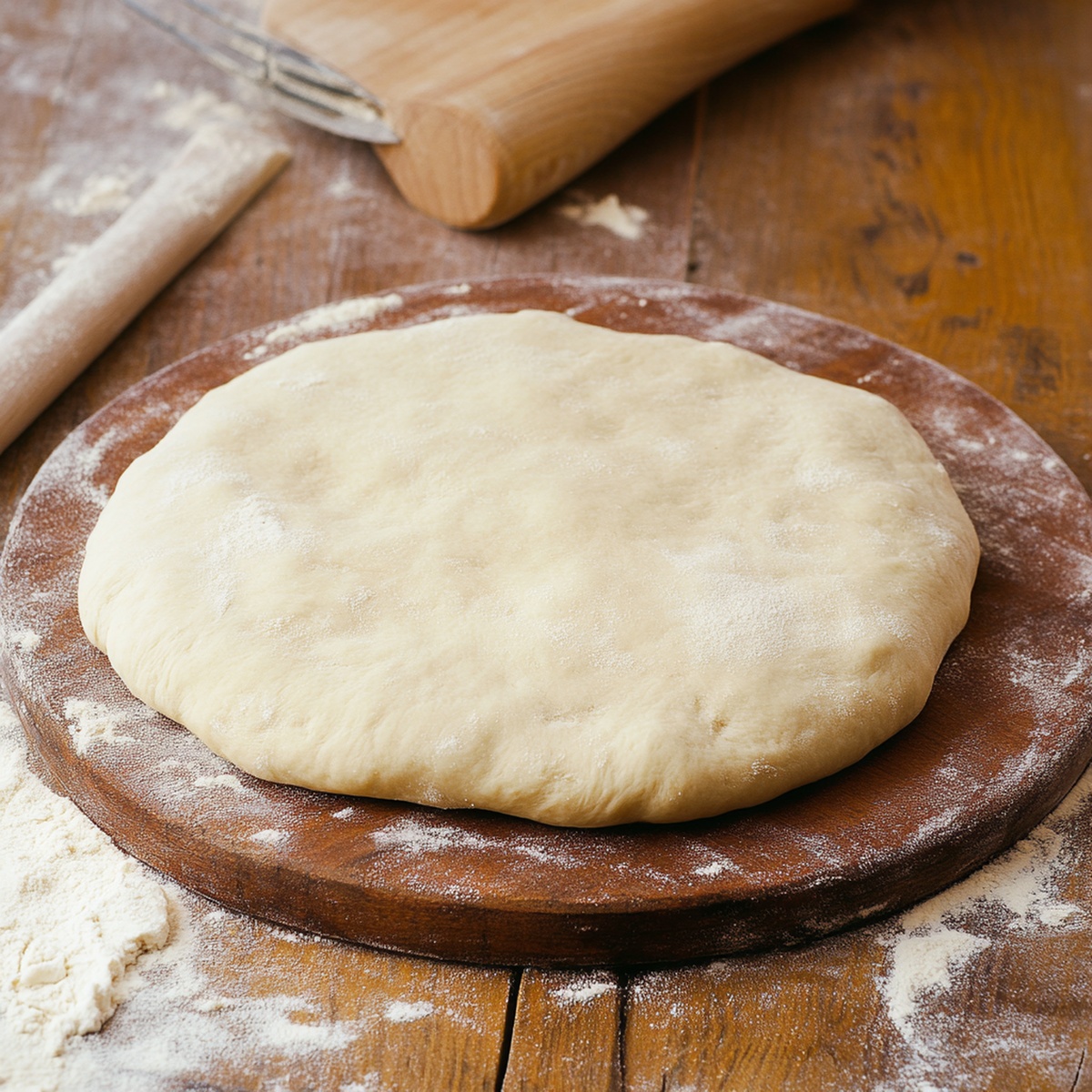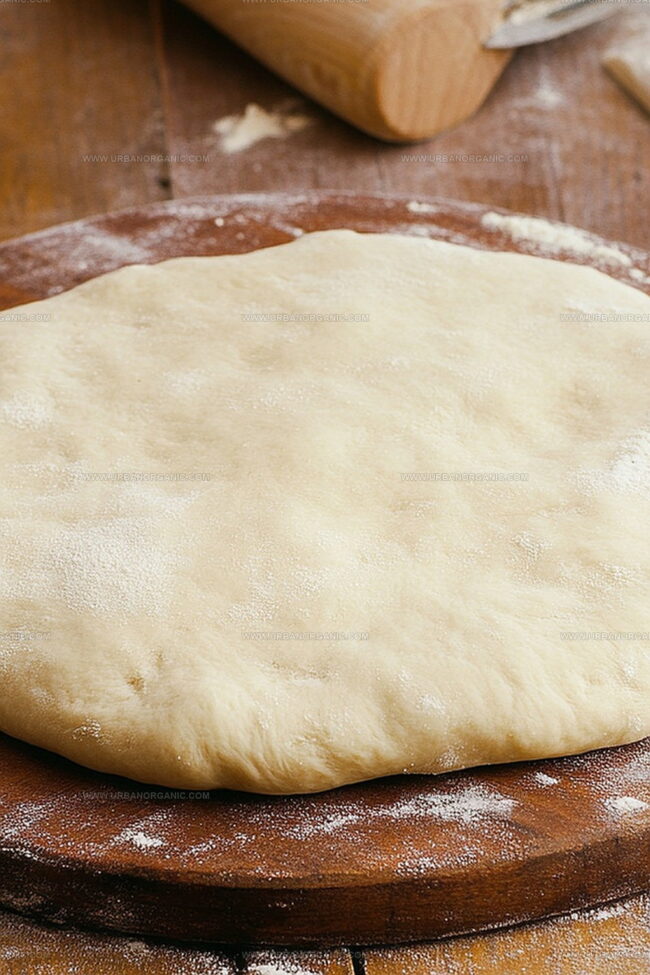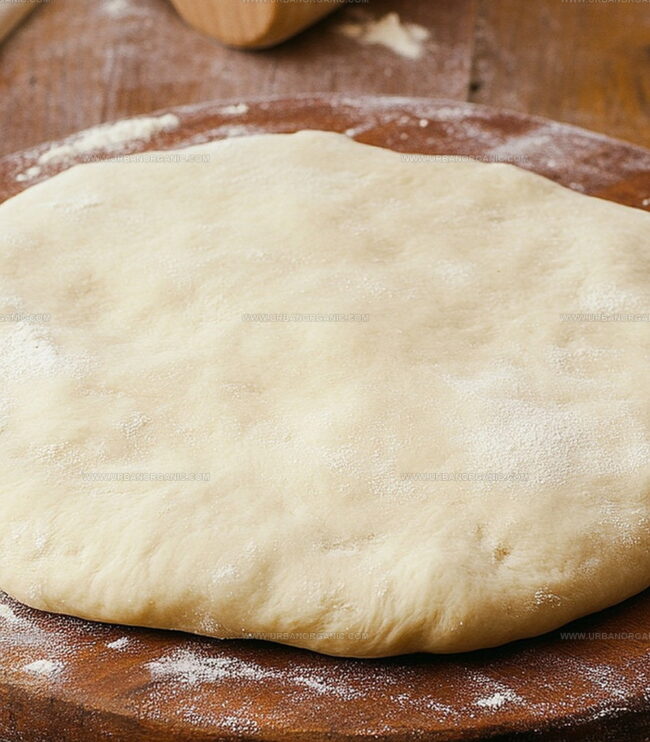Easy Homemade Pizza Dough Recipe: Foolproof & Fluffy Every Time
Crafting a homemade pizza dough recipe can transport you to an Italian kitchen with just a few simple ingredients.
Flour, yeast, and water become magical when mixed with care and patience.
Every baker knows the secret lies in understanding how ingredients interact and transform.
Kneading becomes a rhythmic dance of pushing and folding soft, elastic dough.
Salt and olive oil add depth and complexity to the basic mixture.
Professional chefs and home cooks alike appreciate the satisfaction of creating something delicious from scratch.
You’ll feel like a culinary artist as the dough rises and develops its unique character.
Roll up your sleeves and let the pizza-making adventure begin!
Why Pizza Dough From Scratch Is Worth It
Ingredients That Make Great Pizza Dough
Dry Ingredients:Wet Ingredients:Leavening Agent:Mixing and Proofing Dough the Way
Step 1: Activate Yeast Mixture
In a spacious mixing bowl, combine warm water, sugar, and yeast. Whisk gently and allow the mixture to rest for 5-10 minutes until it becomes frothy and bubbly.
Step 2: Create Dough Base
Add olive oil, salt, and flour to the activated yeast mixture. Stir using a wooden spoon or dough hook until a rough, shaggy dough emerges.
Step 3: Knead and Develop Texture
Transfer the dough onto a lightly floured surface. Knead energetically for 6-8 minutes, incorporating additional flour as needed, until the dough transforms into a smooth, elastic consistency.
Step 4: First Fermentation
Place the dough in a lightly oiled bowl, then cover with a damp cloth or plastic wrap. Allow the dough to rise in a warm, draft-free area for 1 to 1½ hours, or until it doubles in volume.
Step 5: Prepare for Shaping
Gently deflate the risen dough by pressing down. Divide the dough if planning to make multiple pizzas.
Step 6: Shape and Bake
Roll out the dough on a floured surface to your desired thickness. Add preferred toppings and bake in a preheated oven at 475°F (245°C) for 12-15 minutes, or until the crust turns golden and crisp.
Tips for Stretchy, Elastic Pizza Dough
How to Store Pizza Dough for Later Use
What You Can Make with This Dough Base
Dough Variations That Change the Crust Game
Common Pizza Dough Questions, Solved
Proof the yeast by mixing it with warm water and sugar. If it becomes foamy and bubbly within 5-10 minutes, it’s good to use. If no foam develops, the yeast is dead and you’ll need fresh yeast.
Kneading develops gluten, which gives the dough its stretchy texture and helps create a chewy, crispy crust. Proper kneading ensures the dough will rise well and have a good structure.
Yes, you can prepare the dough in advance. After the first rise, you can refrigerate the dough for up to 24 hours. Just let it come to room temperature before rolling and baking.
Ensure your yeast is fresh and active. Check that the rising area is warm (around 70-80°F) and draft-free. Covering the dough with a damp towel helps create the right humid environment for rising.
Print
Pizza Dough Recipe
- Total Time: 30 minutes
- Yield: 1 1x
Description
Rustic homemade pizza dough brings Italian culinary magic straight to kitchen counters with simple ingredients. Kneading, rising, and shaping become a delightful journey where perfection meets passion, inviting you to create authentic flavors that dance across your palate.
Ingredients
Main Ingredients:
- 3 ½ to 4 cups all-purpose flour
- 1 ½ cups warm water (about 110°F/43°C)
Leavening and Flavor Enhancers:
- 2 ¼ teaspoons (1 packet) active dry yeast
- 1 tablespoon sugar
- 1 teaspoon salt
Liquid Ingredients:
- 1 tablespoon olive oil
Instructions
- Activate the yeast by combining warm water, sugar, and yeast in a spacious mixing vessel. Allow the mixture to rest and become frothy, approximately 5-10 minutes.
- Incorporate olive oil, salt, and a portion of the flour into the activated yeast mixture. Blend thoroughly using a wooden utensil or dough attachment until a rough, loosely formed dough emerges.
- Transfer the dough onto a generously floured work surface. Knead the dough vigorously for 6-8 minutes, gradually introducing additional flour as necessary to achieve a smooth, pliable texture.
- Lightly coat a clean bowl with olive oil and place the kneaded dough inside. Shield the dough with a moistened cloth or plastic membrane, then position in a warm, draft-free environment to ferment and expand for 1-1.5 hours.
- Gently deflate the risen dough, redistributing the internal gases. If preparing multiple pizzas, segment the dough into appropriate portions.
- Using a rolling pin, stretch and shape the dough to desired thickness on a flour-dusted surface. Layer preferred toppings across the dough’s surface.
- Slide the prepared pizza into a preheated oven at 475°F (245°C). Bake for 12-15 minutes, monitoring until the crust transforms into a golden, crisp foundation.
Notes
- Activate the yeast properly by using warm water between 100-110°F to ensure proper fermentation and rising.
- Control moisture carefully when kneading by adding flour gradually to prevent a dry, tough dough.
- Rest the dough in a draft-free, warm spot like near a preheated oven to maximize volume and develop better flavor.
- Experiment with whole wheat or gluten-free flour blends for alternative dietary needs while maintaining similar texture and structure.
- Prep Time: 15 minutes
- Cook Time: 15 minutes
- Category: Dinner, Snacks
- Method: Baking
- Cuisine: Italian
Nutrition
- Serving Size: 1
- Calories: 50
- Sugar: 3 g
- Sodium: 2000 mg
- Fat: 0 g
- Saturated Fat: 0 g
- Unsaturated Fat: 0 g
- Trans Fat: 0 g
- Carbohydrates: 12 g
- Fiber: 0 g
- Protein: 1 g
- Cholesterol: 0 mg




Jessica Martinez
Pastry Chef & Recipe Developer
Expertise
Organic Baking Techniques, Gluten-Free Recipe Development, Southwestern Dessert Specialties, Food Styling and Photography
Education
Santa Fe Community College (SFCC)
Jessica brings the sweet side to Urban Organic with her passion for baking and love for the Southwest. She trained at Santa Fe Community College and has built a career creating beautiful, gluten-free, and organic desserts that feel both nostalgic and new.
She believes baking should be fun, creative, and open to everyone, no matter your diet or skill level. Jessica’s recipes are simple enough to follow, but special enough to remember.